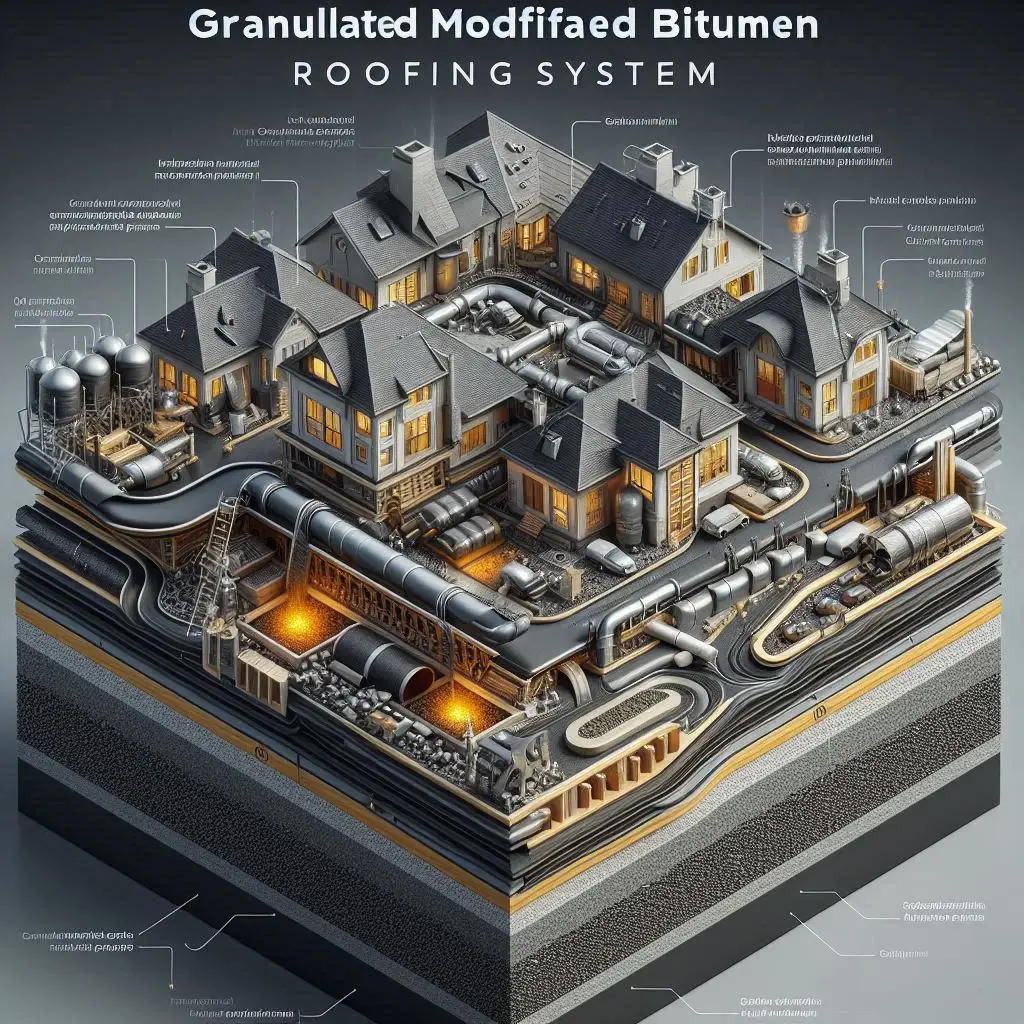
granulated modified bitumen roofing system hot bituminous pavement
Introduction
A granulated modified bitumen roofing system has become a top choice for residential and commercial structures due to its versatility, strength, and ease of installation. The system consists of multiple layers that work together to provide optimal protection from the elements.
The core component of this system is the modified bitumen membrane, which is composed of asphalt mixed with polymers such as SBS (Styrene-Butadiene-Styrene) or APP (Atactic Polypropylene). These polymers enhance the flexibility, temperature resistance, and elasticity of the bitumen, making it more durable and adaptable to a variety of climates.
Granules, typically made from ceramic or crushed stone, are applied to the membrane’s surface to offer additional protection. These granules shield the membrane from harmful UV radiation, preventing premature aging. They also add fire-retardant properties and contribute to the aesthetic appeal of the roof. The granules come in various colors, allowing architects to customize the roof's appearance to match the building’s design.
The system is applied using either hot asphalt or cold adhesive, depending on the specific needs of the project. The flexibility of the modified bitumen membrane allows it to expand and contract without losing its structural integrity, making it ideal for areas prone to temperature fluctuations. This feature also makes the system highly resistant to leaks, cracks, and splits, ensuring long-term durability.
Hot Bituminous Pavement
Hot bituminous pavement, also known as Hot Mix Asphalt (HMA), is widely used in the construction of roads, highways, and parking lots due to its durability and flexibility. This paving material is a mixture of aggregates (such as crushed stone, gravel, and sand) combined with bitumen, a binder derived from crude oil.
The process of creating hot bituminous pavement involves heating the aggregates to high temperatures before mixing them with bitumen in an asphalt factory. The hot mix is then transported to the construction site, where it is compacted while still hot, ensuring strong adhesion to the base layer and providing excellent strength.
One of the key benefits of hot bituminous pavement is its ability to withstand heavy traffic and adverse weather conditions. Its resistance to cracking, rutting, and wear makes it an excellent choice for high-traffic areas that require a durable and long-lasting surface. Additionally, hot bituminous pavement has a longer service life, requiring fewer repairs or replacements over time.
Another advantage is its customizability. The mix can be modified to meet specific project requirements, with variations in aggregate size, gradation, and binder content. This flexibility makes it suitable for a wide range of paving projects, from residential streets to high-speed highways.
Hot bituminous pavement is also an eco-friendly option, as it can incorporate recycled materials such as reclaimed asphalt pavement (RAP) and recycled asphalt shingles (RAS). These materials help reduce the environmental impact of paving projects by conserving natural resources and minimizing waste.
Future Developments and Trends
The construction industry is constantly evolving, and future developments in material science will likely enhance the performance and sustainability of both granulated modified bitumen roofing systems and hot bituminous pavement.
In the realm of roofing, innovations may lead to even more durable modified bitumen membranes, as well as advanced granule coatings that offer superior UV protection and aesthetic versatility. Future roofing systems could incorporate environmentally friendly materials, reducing the carbon footprint of their production and installation.
For paving, the industry is shifting toward warm mix asphalt (WMA), a technology that allows for lower mixing temperatures, resulting in reduced energy consumption and lower emissions. Additionally, the use of bio-based binders and recycled materials in asphalt production is expected to increase, further improving the sustainability of paving projects.
Conclusion
In conclusion, both granulated modified bitumen roofing systems and hot bituminous pavement are essential components in the construction industry, offering durability, flexibility, and sustainability. As technological advancements continue to shape these materials, their performance and environmental benefits will only improve, making them even more valuable for a wide range of construction projects. By embracing these innovative solutions, builders and developers can help ensure the creation of long-lasting, eco-friendly infrastructure for years to come.
The demand for high-performance construction materials is growing as climate change and urban expansion challenge traditional building methods. The ability of modified bitumen roofing to resist extreme weather conditions makes it a preferred option for both residential and commercial buildings. Similarly, hot bituminous pavement remains a crucial element in modern infrastructure, ensuring safe and durable roads.
Additionally, sustainability is playing a more significant role in material selection. The integration of recycled materials, energy-efficient production methods, and eco-friendly binders in both roofing and paving industries demonstrates a commitment to reducing environmental impact. Governments and organizations worldwide are pushing for greener alternatives, making these innovations even more critical for the future of construction.
Ultimately, investing in high-quality materials like granulated modified bitumen and hot bituminous pavement ensures not only cost savings in maintenance and repairs but also a sustainable and resilient infrastructure that benefits future generations.

